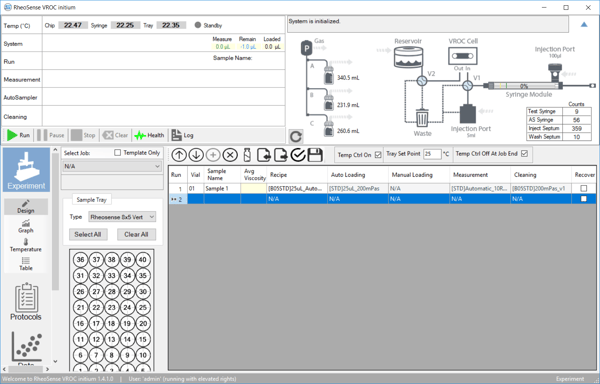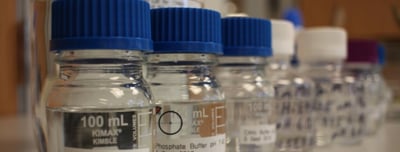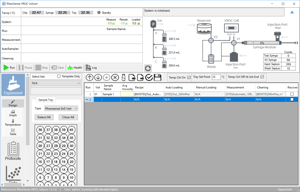The RheoSense VROC® initium one plus automated viscometer is a leading high shear viscometer that provides full sample characterization with minimal volume and labor. This instrument uses an intuitive software that allows for automatic loading, testing, and cleaning of a wide range of sample types. Appropriate cleaning protocols for your tested solutions ensure that the flow path is thoroughly cleaned before the next solution is introduced. Typical cleaning protocols rely on a combination of three solvents called the primary, secondary, and enhancer. For some solutions, it is beneficial to modify existing cleaning protocols to utilize different solvent types or only one or two solvents. Benefits of custom protocol design include using less solvent, shorter cleaning times, and optimal cleaning of the instrument.

Cleaning protocols relying on three separate solvents are commonly used. Even though a typical primary solvent has a viscosity of ~1 cP, there are cases in which the primary solvent with a considerably higher viscosity is more appropriate. For example, dimethyl sulfoxide (DMSO) has a viscosity of 2 cP and is the only solvent that can dissolve some components, like some polymers, and act as the primary solvent. When using DMSO to clean an A05 chip, it is necessary to modify the cleaning flow rates to avoid over-pressuring the chip. It is also important to consider the compatibility between the solvents. In the case of using DMSO as the primary solvent, the typical secondary solvent of 1 % aquet is not compatible with DMSO; hence, Micro-90® must be used as the secondary solvent.

Protocols relying on one or two cleaning solvents are beneficial for some solutions containing solutes dissolved in organic solvents. We have found that using only two cleaning solvents is adequate for clearing out solutions of lithium perchlorate salt dissolved in battery solvent/s dimethyl carbonate, ethyl methyl carbonate, and/or ethylene carbonate. In this case, the primary solvent is the battery solvent/s while the enhancer is acetone. Cleaning protocols with one solvent are suitable for samples containing solute dissolved in a volatile solvent. For example, chloroform can be the primary solvent for polymers like polycaprolactone or polystyrene dissolved in chloroform.
We can help you design your custom protocols. Learn more about RheoSense custom protocol design services and our service contract benefit.
Written by: Chrystian Ochoa, PhD, RheoSense Applications Scientist



